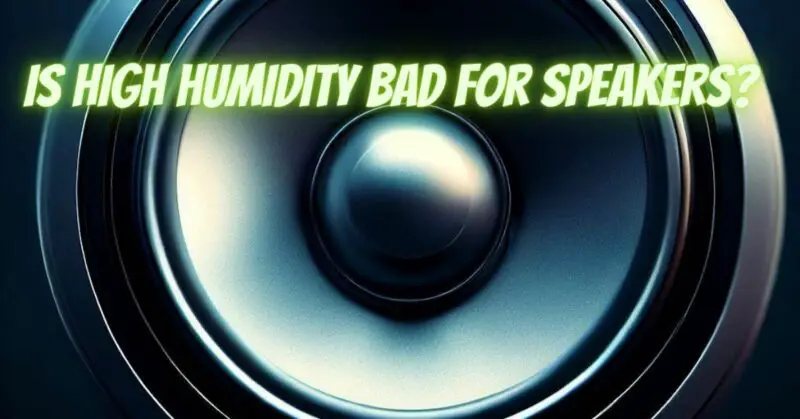Humidity, the amount of moisture present in the air, can have a significant impact on various electronic devices, including speakers. While speakers are generally designed to withstand normal environmental conditions, high humidity levels can potentially lead to damage and affect their performance. In this article, we explore the effects of high humidity on speakers, the risks it poses, and the measures to protect your valuable audio equipment from its adverse effects.
- Effects of High Humidity on Speakers:
High humidity levels can introduce moisture into the components of speakers, leading to potential issues such as:
a. Cone Deterioration: The moisture in the air can cause the speaker cone, often made of paper or other fibrous materials, to absorb water. This can result in the cone becoming saggy or swollen, affecting its ability to produce accurate sound.
b. Corrosion: Metal parts, such as the speaker terminals and connectors, can be susceptible to corrosion in high humidity conditions. This corrosion can disrupt electrical connections and lead to signal loss or degradation.
c. Mold and Fungus Growth: In extremely humid environments, speakers can become a breeding ground for mold and fungus. These organisms can affect the speaker’s performance, create unwanted noise, and, in severe cases, damage internal components.
d. Coil Damage: The voice coil, a crucial part of the speaker’s driver, can be sensitive to humidity. Excessive moisture can cause the coil to corrode or weaken, leading to distortion or complete failure.
- Risks and Consequences:
Prolonged exposure to high humidity levels can gradually degrade the internal components of speakers, leading to compromised sound quality and performance. The consequences of high humidity can range from subtle changes in audio quality to irreparable damage requiring speaker replacement.
- Measures to Protect Speakers from High Humidity:
a. Climate Control: If possible, place your speakers in a controlled environment with stable humidity levels. Keeping the humidity between 40% to 60% is generally considered safe for electronic equipment.
b. Dehumidifiers: In areas with consistently high humidity, consider using a dehumidifier in the room where your audio equipment is located. This will help maintain an optimal environment for your speakers.
c. Protective Covers: When speakers are not in use, consider using protective covers to shield them from direct exposure to moisture.
d. Regular Inspections: Periodically inspect your speakers for any signs of moisture, mold, or corrosion. If you notice any issues, take prompt action by consulting a qualified technician.
e. Proper Ventilation: Ensure that the room where your speakers are placed is adequately ventilated to prevent moisture buildup.
f. Warm-Up and Cool-Down: Avoid exposing your speakers to sudden temperature changes, as this can cause condensation to form inside the speaker cabinet. Gradual warm-up and cool-down are recommended.
High humidity can pose risks to speakers, potentially leading to cone deterioration, corrosion, coil damage, and mold growth. To protect your valuable audio equipment, maintain a controlled environment with stable humidity levels between 40% to 60%. Consider using dehumidifiers and protective covers if you live in a region with consistently high humidity. Regular inspections and prompt action if issues are detected will help ensure your speakers continue to deliver exceptional sound quality and preserve the joy of music for years to come.


